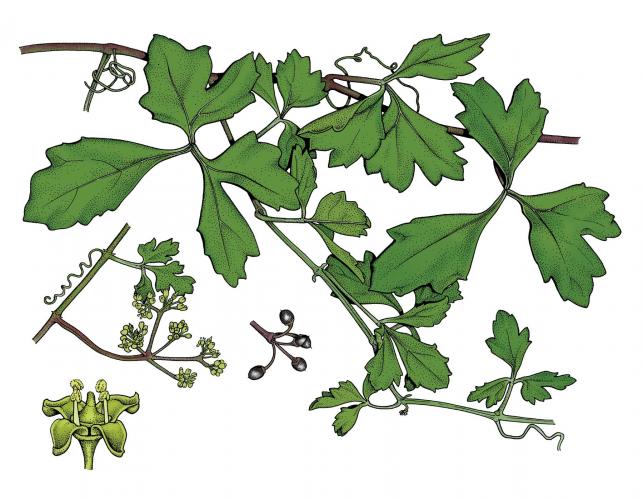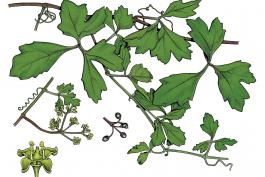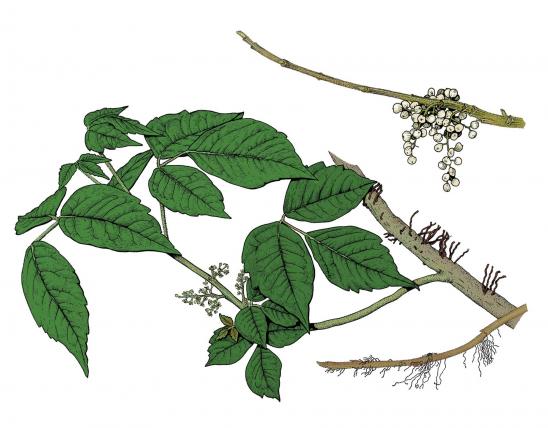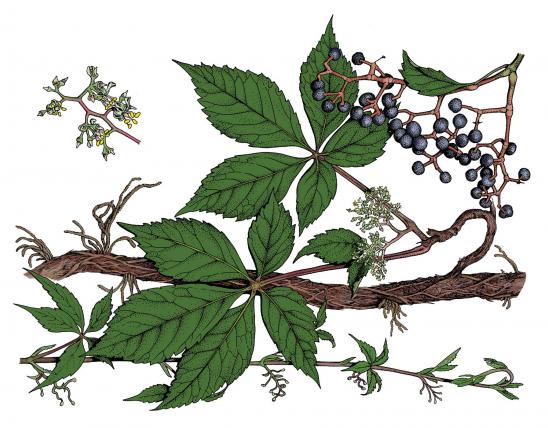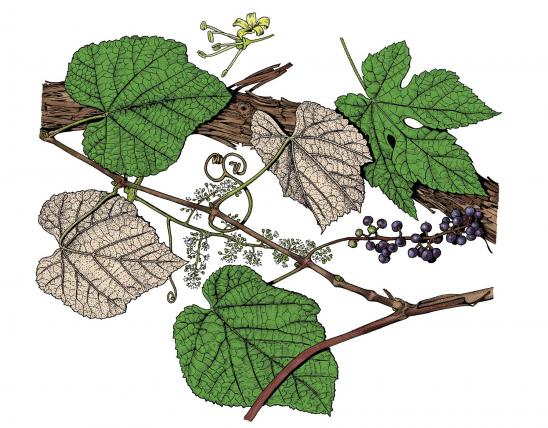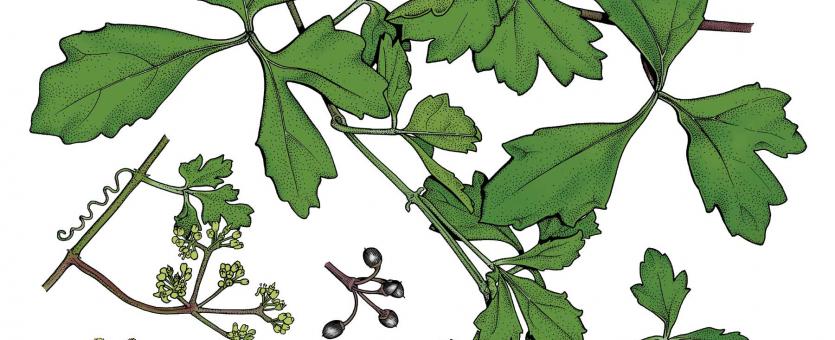
Marine vine is a climbing or trailing woody vine to 30 feet high, climbing by tendrils, with tuberous roots. Sometimes it is only woody at the base.
Leaves are alternate, compound, very fleshy or succulent, with 3 leaflets or leaves deeply 3-lobed; bad-smelling when crushed; end leaflet 1½–2 inches long, 1¼–2 inches wide, fan-shaped, commonly 2-lobed; margins coarsely toothed; both surfaces dull green, smooth or with a few minute white hairs.
Stems green to reddish and angled when young; brown to gray, often warty, when older; pores orange; often die back to ground in hard winters. Climb via coiled, mostly unbranched tendrils emerging from scattered nodes. Bark thin, soft, light tan to gray, with numerous raised orange pores. Pith is large, white.
Flowering is in June–July. Flowers greenish, small, 50–80 in an umbrella-shaped cluster; petals 4.
Fruit matures in October. Fruits are black, shiny, round berries about ¼ inch long, on curved stalks ½–1 inch long, in clusters. Fruit is not edible. Seed 1 per fruit, oval, brown, with pointed tip and rounded base.
Stem length: 6–20 feet, sometimes reaching 32 feet.
Uncommon in southwestern Missouri, recorded from five southwestern counties bordering Arkansas. The overall range of this species is mostly south of our state. It extends from Florida to Arizona and south into the Caribbean Islands, Mexico, Central America, and clear into South America.
Habitat and Conservation
Occurs on tops and ledges of dolomite bluffs, scrambling over hot, dry, west- and south-facing rocky exposures. Associated plants in Missouri include Ashe’s juniper, prairie acacia, soapberry tree, golden currant, stickleaf, and cloak fern.
Status
A Species of Conservation Concern in Missouri; ranked as imperiled. Globally, it is secure. Globally, there are about 200 species in the genus Cissus. Most are in tropical or warm-temperate regions. Marine vine is the only species of Cissus native to Missouri.
Human Connections
Marine vine has showy flowers and makes a good, low-maintenance native ground cover or as cover for fences, arbors, or small buildings. Established vines, however, can be difficult to eradicate. Touching this plant might cause skin irritation in some people. Some exotic species of Cissus are grown as houseplants; grape ivy and oak leaf ivy are examples.
Ecosystem Connections
Marine vine is apparently not eaten by many animals, perhaps because of its foul-smelling chemicals. The berries, however, seem to be eaten by birds, which distribute the undigested seeds far from the parent plant. Meanwhile, at least three types of sphinx moths (mournful, satellite, and vine) use this species as a larval food plant.
